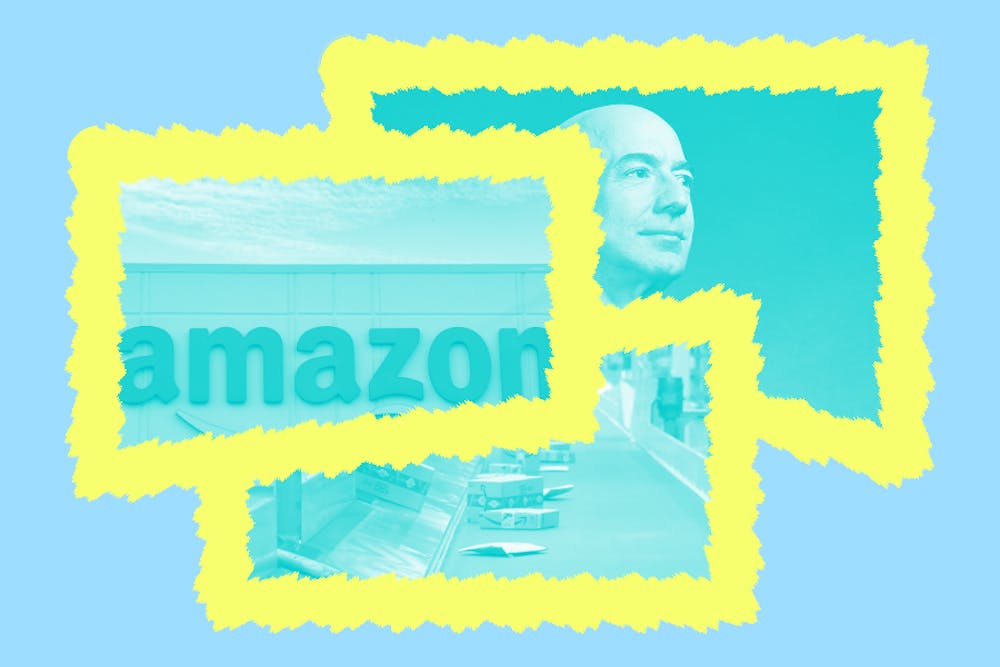Multi–billionaire and former Amazon CEO Jeff Bezos stepped down from his post a little over a month ago—but don't let that distract you from the fact that the company's striking issues still persist. A recent company–wide boycott of Amazon has reignited the conversation about Amazon's exploitive practices.
With over 197 million monthly website visitors, Amazon is the most popular online marketplace across the globe. Back in 2018, Amazon made up almost a 50% share of the United States e–commerce market. These staggering figures make a lot of sense when you consider that the company sells over 12 million products online, and it now owns stores like Whole Foods and Zappos. Amazon is a profit–generating machine—one with a lot of flaws. While it may be one of the most used marketplaces, it's also one of the most criticized companies in the world.
Amazon's mission states that its goal is to be the most customer–centric company on the planet. "Our mission is to continually raise the bar of the customer experience by using the internet and technology to help consumers find, discover, and buy anything, and empower businesses and content creators to maximize their success," the statement reads. It presents an ambitious goal—maybe even a goal they've already achieved. However, Amazon's mission leaves a lot of room for criticism—there's no promises of sustainability, reasonable wages, or healthy work environments in sight.
One of the most worrying aspects of the leader in online sales is its relationship with its workers. When you think about working for Amazon, you might think about the software development and project management positions that college students compete to get. Or maybe you picture the buzzing headquarters in Seattle, where employees are treated to common rooms with rotating art displays and architectural showpieces like The Spheres—structures full of thousands of tropical plants, in case you need a break from the city and technology. But what about the people who pack and ship millions of orders daily? These often ignored workers who make the company run have faced a multitude of labor issues, like the suppression of unions in Amazon warehouses. In fact, the recent boycott of Amazon products and services was organized to support Amazon warehouse workers in Alabama whose efforts to form a union haven't yet been successful.
On top of suppressing unions, Amazon is under fire for poor warehouse working conditions and insufficient wages. In a 2017 corporate filing, Amazon reported that the median salary of its employees is $28,446, which equates to about $13.68 an hour for full–time workers. When you consider that former CEO Jeff Bezos made more than that every nine seconds, it's quite unsettling. Amazon raised the minimum wages of their workers to $15 an hour in 2018, but at the expense of benefits and incentives, such as company stock benefits and the prospect of bonuses. Even workers affected by this 'improvement' were not excited, as their fast–paced jobs were still too strenuous for a wage of $15 an hour. According to The Guardian, warehouse workers have witnessed time–crunched employees using trash bins to go to the bathroom.
Yet another criticism of Amazon is the company's unsustainable production. For one, Amazon relies heavily on fossil fuels to maintain its position as the leader in online sales. Green America, an environmentally focused nonprofit, has pressured Amazon for several years to adopt cleaner energy practices. However, the organization has highlighted that, during the pandemic specifically, Amazon has failed to do so. Amazon, unlike many major technology firms such as Google and Intel, has failed to establish 100% renewable energy–powered data centers, a goal the company is still four years away from. Additionally, Amazon has advertised its servers and machine learning technology to help fossil fuel companies increase drilling—a practice that directly leads to air pollution and increased greenhouse gas emissions. When you consider these practices along with the fact that Amazon's pollution is still increasing, the company's climate pledge carries little significance.
These criticisms are only a handful of the poor practices Amazon has been accused of. From bringing in billions in taxpayer subsidies as a company worth trillions of dollars, to hosting the Department of Homeland Security's databases that "track and apprehend immigrants," Amazon quite literally is an ethical disaster. While it may be convenient for you to keep your Prime membership, or search up products on Amazon when you're in a time crunch, these criticisms warrant action. We can't continue sacrificing ethical consumption for convenience. Considering that as of 2018, almost 80% of Amazon's sellers also sell goods through other platforms, including their own websites, we should put in the work as consumers to seek those platforms out. Even though Amazon's logo is meant to represent a smile, no one should be smiling after learning about the company's horrible practices.







